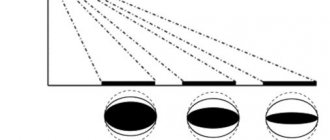Stages of the volitional process
Volitional acts are formed in the presence of motivation. It is a collection of desires, needs and motivations. The following stages of the volitional process are distinguished:
- Inducement;
- Awareness of the many possibilities for achieving a certain goal;
- The struggle of motivations;
- Making the most optimal decision;
- Implementation of a previously made decision.
The duration of each stage may not be the same in different cases. It depends on the individual characteristics of a person’s personality and many objective reasons. There is no clearly defined boundary of transition between different stages of the volitional process.
Each person must have certain qualities necessary to transform impulse into action. This is, for example, determination, which allows you to make a specific final choice. The volitional process is especially detrimentally affected by indecision during the transition from the stage of struggle of motives to the implementation of the decision made.
The second important quality is initiative. It is extremely important for aspiration to arise. It is especially important to take the initiative when implementing a decision made earlier. Also an extremely important quality is persistence in action, as well as in following the sequence of movements and steps taken. The volitional process is also influenced by such qualities as independence, endurance, self-control in the event of unforeseen circumstances, as well as a certain amount of self-criticism. Among other qualities, it is necessary to note independence in decisions and actions, endurance, self-control in moments of unexpected complications and a certain amount of self-criticism. It is especially important to demonstrate the latter quality at the moment when something goes wrong. Disorder of volitional processes can occur at any stage.
About Me
I was born in Moscow, into a poor Russian (or should I say Soviet?) family. Both of my grandfathers had higher education, received in the pre-war years, so according to the old joke, I can be classified as half (who can remind me how to spell this correctly?) intelligentsia.
My entire childhood was spent under the constant care of my grandmother. My grandmother was orphaned at an early age, then she studied at the very school in Sokolniki, where Lenin and Lunacharsky loved to visit so much, then she graduated from the library technical school... Wherever fate took her and whatever she had to do in her time - work as a librarian at the Polytechnic Museum , preparing speeches for Kalinin, presenting awards to heroes in the Hall of Columns, casting rubber soles for boots - she loved reading more than anything else. In this I am definitely like her. I learned to read at the age of 4, and I still keep in a place of honor my first book that I read on my own, Pippi Longstocking.
I really wanted to go to school. From the first day, school disappointed me... firstly, my first teacher (I was in the last of the first four classes that were recruited during the Olympic summer, so she taught me for a couple of months, then she was replaced by another, and then others), mixed up my name on the copybook, secondly, from the very first day she forbade me to write with my left hand, thirdly, immediately, on September 1, my hat and pencil case disappeared... but most importantly, they told me that, it turns out, I was not at all I can read: “First you need to learn to read syllables,” my first teacher explained to me, “then you will learn to read the syllables together.” What I can already do together was rejected out of the gate as a obviously impossible option. So I probably would have soon lost all interest in school, becoming a poor student, but one (not the most pleasant) circumstance helped me out a lot: I was often sick. My bronchitis could last for two or three weeks. As soon as I stopped coughing, I fell ill again. Sitting at home, I studied every day: I spent an hour on school lessons, and in the remaining hours (my grandmother categorically did not allow me to walk with a fever) I read. Parents did not ignore this, the home library grew due to books received in exchange for returned waste paper (at one time, honestly! - good books were in great short supply) and brought from business trips to the union republics (the book Eldorado in the USSR was most likely total, Tashkent).
By the sixth or seventh grade, I became almost an excellent student. There were two very difficult subjects that spoiled my report card - physical education (the ultimate dream was a B) and the Russian language (the ultimate dream was that the teacher would correctly understand at least the content of my essay - I could no longer write with my left hand, but I could regularly scribble with my right hand) . In the summer after 7th grade, I asked my mother to make me copybooks - the same ones I once had in first grade. Since then, I have been writing very beautifully, in my mother’s neat handwriting, each letter of which I learned to copy with remarkable speed—correctly with my right hand, and mirrored with my left hand (Abbé Faria knew, as it turned out, not all the nuances of writing with his left hand). From that moment on, I became an excellent student on a regional scale: my written works became available for reading and I won all regional Olympiads in a row - from history and biology (which I loved very much) to mathematics and physics (which I did not like, and, to be honest, I knew, just enough so that they regularly give me an A).
And I became very bored again. Quite by accident (it seems that my grandmother read an advertisement in “Evening Moscow”) I got to the All-Union Olympiad at the Faculty of Biology of Moscow State University. I can’t say that I failed miserably, but my result was far from the most outstanding. It became clear: the school textbook and popular science books, which made me an excellent student at the regional scale, would not help me at all when entering a prestigious university (my thoughts at that moment were focused on the biology department). But there were no serious books anywhere - neither in the school library, nor in the district library. They were in the University Bookstore, the basement store of the Mir publishing house, in the Medical Book and (less often) in the Pedagogical Store. They were also in the famous “Second Book Stores” on Stoleshnikov Lane and in the passage of the Art Theater, brand new, clean, but at a speculative (as they said then) exorbitant price. I was offered to change schools - the biology department had its own, studying in which almost guaranteed admission, but I had to travel through half of Moscow, and there was no metro in my area in those years.
It was during this period that an incident occurred that predetermined my fate - or at least my profession. I accidentally found out that there is also a biology school at the 2nd Medical Institute, but it works as an elective - 2-3 times a week after school. Thus, through the “Young Doctor” club, my journey into the profession began. About two years later, my first medical teacher, Marlen Iosifovich Pekarsky, persistently advised me to enter the pediatric faculty. “All diseases begin in childhood,” he said. “A pediatrician doesn’t just treat, he raises a healthy person,” but then I didn’t listen: they said that the medical department was stronger, which was confirmed by the competition. They didn’t recommend meddling without a medal. Without medical experience either.
Obtaining medical experience turned out to be as easy as shelling pears - in those years there was a system of vocational training for schoolchildren (training and production plants) and a diploma of a junior nurse (a certified ward cleaner, as they said in hospitals) equated yesterday's schoolchild to a graduate of a medical school. And the students passed the entrance exams, of course, better. But I had to tinker with getting the medal... Being a constant excellent student and eventually becoming (naturally, as it seemed to me) a medalist turned out to be not the same thing at all. They still gave me a medal, and not a gold one, but a silver one, but my nerves were pretty frayed. The road to the institute was open. All that remains is to pass the exams.
Once, for fun, I counted how many exams I had taken in my entire life: it turned out to be at least a hundred. But never have I waited for a result with such trepidation as after the entrance exam in chemistry. And I have never been so happy about receiving a “B”. Anyone who got “good” in chemistry at the next exam was greeted as a future student.
Six years of college student life flew by like bullets over your head! I dare say that these were the happiest years of my life. Nothing to do with school! Competent teachers, a huge library, and spring again! and daily clinical practice, scientific circles, and the eternal question: who to be? I was strongly attracted by two professions: psychiatry and pathological anatomy, but chance helped me make my choice. Once, a meeting of the Department of Pathological Anatomy lasted until the night. Going down the steep stairs, I noticed at the bottom a girl of about five years old, who had just tripped up some important (and not very sober) guy from the pulpit, and was now fighting him off, screaming at the top of her lungs: “Let me go! I came for my mother! She heals the dead here!” And for some reason I immediately didn’t want to treat the dead...
They say that it is better to have a blue diploma and a red face than a blue face and a red diploma. For some reason, it didn’t occur to anyone that the unfairly neglected options also have a right to life. To get a diploma with honors, you just need to study with excellent marks. Another thing is that receiving a diploma with honors does not guarantee its owner a cloudless future - it is simply a mute witness to the fact that six years of study were accompanied by your hard work. Having decided on the choice of a future profession, the student must begin work in the chosen direction - and study at a specialized department, earning a reputation for himself. I decided not to remain at the department of my native institute... for some reason it seemed to me that a completely different, adult world lay ahead, full of scientific discoveries and serious work. At the end of my fifth year, I went to earn my reputation at the Center for Forensic Psychiatry, getting a job there as a laboratory assistant.
Thus began my scientific and clinical life in psychiatry. For the first six years of my work, I was focused on studying forensic psychiatry, which gave me very extensive experience in diagnosing mental disorders, and correct diagnosis is the key to successful therapy. And then what probably should have happened happened - after defending my PhD thesis, I became a child psychiatrist. To work, it was necessary to obtain a legal education, engage closely in psychotherapeutic practice, and learn to work together with specialists from other professions - teachers, psychologists, social service workers.
Behind him are more than ten years of work in child psychiatry. Thousands of children examined and treated. Behind are orphanages, specialized schools, shelters, and children's penitentiary institutions. And the gradually emerging understanding that child psychiatry is, first of all, developmental psychiatry, psychiatry inextricably linked with pedagogy, psychiatry capable of using the inexhaustible resources of the psyche of its patients in the treatment process. Now I “don’t just heal, I raise healthy people.”
Links
Master's thesis: Forensic psychiatric assessment of personality disorders taking into account the provisions of Art. 22 of the Criminal Code of the Russian Federation. Dissertation for the degree of Candidate of Medical Sciences (as a manuscript). M. 2001. - 195 p.
Doctoral dissertation: Systematics and correction of mental disorders in minors with neglect and criminal activity. Dissertation for the degree of Doctor of Medical Sciences (as a manuscript). M.: 2011. — 304 p.
Books
Articles
Free online consultations
Motor-volitional disorders
There are the following types of motor-volitional disorders:
- Abulia is a pathological lack of motivation and desire for any type of activity.
- Hypobulia - manifested by a decrease in volitional activity, poverty of motives, inactivity, lethargy, decreased motor activity, and lack of desire to communicate.
- Hyperbulia is increased activity, which is caused by the presence of a significant number of impulses to activity. They change frequently.
- Parabulia - manifests itself as a perversion, a change in volitional activity. Due to the fact that the patient has psychopathic symptoms, the motivation for activity, motives, as well as goals for implementation are completely perverted.
Motor and volitional disorders can occur in many mental disorders. Patients may experience food craving disorders (bulimia, polydipsia, anorexia, coprophagia, parorexia). Disorders of sexual desire are also noted. They include hypersexuality, exhibitionism, fetishism, transsexualism, necrophilia, bestiality, pedophilia, etc. When the instinct of self-preservation is violated, the patient exhibits suicidal tendencies.
A person has an irresistible urge to achieve a certain goal, but with a critical assessment (dromomania, kleptomania, dipsomania, coprolalia, pyromania and imifomania). Impaired desire can occur with behavioral and personality disorders, as well as in the event of disturbances in physiological functions.
Attention disorders
Attention disorders can be different. Attention has 5 properties:
- Sustainability;
- Switchability;
- Concentration;
- Volume;
- Distribution.
Attention disorders
- Absent-mindedness is a decrease in the ability to intend attention. Occurs in personality disorders.
- Distractibility - Frequently changing objects of attention. It is characteristic of manic syndrome.
- Rivetment - the patient's attention takes an extremely long time to move from one object to another. Determined in the presence of depressive syndrome.
- Exhaustion — Attention intensity and concentration quickly decrease. Occurs with asthenic syndrome and organic lesions.
- Narrowing is limiting attention to certain objects.
Symptoms of volitional disorders
Will is a person’s conscious, purposeful control of his activities. Volitional activity is inherent only to humans. Animal behavior is determined by instincts and conditioned reflex connections. In the process of socio-historical development, humans have developed norms of adaptation to the environment on the basis of differentiated conditioned reflex reactions and voluntary control of instincts.
The following stages are distinguished in the volitional process:
- motivation, awareness of the goal and desire to achieve it;
- awareness of a number of possibilities for achieving the goal;
- struggle of motives and choice;
- making one of the possible decisions;
- implementation of the decision.
The totality of desires, motives, and aspirations that acquire the character of motivational activity constitutes the motivational sphere. The motivational sphere includes both conscious (volitional) and insufficiently conscious actions based on various motives (drives, attitudes, etc.).
Volitional disorders can relate both to the level of motivation for activity and awareness of the goal, i.e. the formation of a motive, the adequacy of motives to the properties of the individual and the situation, as well as decision-making and appropriate behavior at all stages of the volitional process.
Violations of volitional impulses
Abulia (from the Greek bule - will), or dysbulia, is a pathological lack of desires and motivations for activity. Abulia is usually followed by adynamia (Greek adinamie - impotence) - a decrease or complete cessation of motor activity of the body or organ.
Abulia is observed in various pathological processes, primarily in schizophrenia, with various frontal lesions and depression.
A decrease in volitional activity can lead to the release of lower actions - automated and instinctive.
Hypobulia - decreased volitional activity, lack of motivation, inactivity, lethargy, decreased motor activity, lack of desire to communicate. These features are often observed in depressive states and schizophrenia. Weakening of attention, impoverishment of thinking, slowing of speech can be observed in states of deafness.
Hyperbulia is increased activity caused by a significant number of impulses for activity, often changing in order to fulfill them. Hyperbulia is observed in manic states and paranoid syndrome. In a manic state, productivity is usually low due to the rapid distractibility of patients and rapid changes in motives. In paranoid syndrome, the activity is one-sided, caused by delusional motives.
Parabulia is a perversion, a change in volitional activity. The motivations for activity, motives and goals of implementation are distorted in connection with the psychopathological syndromes the patient has, for example, auditory hallucinations of a frightening nature, encouraging aggressive activity, etc.
Violations of volitional activity
Violations of volitional activity are possible at the level of decision-making and at the level of transition to the implementation of the decision made. Obsessive doubts: the patient, after a struggle of motives - to go to the cinema or to see friends - decides to go to the cinema, but after making this decision, doubts arise again, and so on endlessly.
The rigidity of the decision made means the lack of correction and flexibility in accordance with the changed situation. Because of these features, the patient cannot proceed to implement the decision, since the situation has changed, and he cannot make a different decision taking into account the changed situation. This is observed in rigid epileptoid individuals.
“Short circuit” type activity occurs suddenly in response to an emotional state: resentment, fear, despair. Moreover, it is accomplished without sufficient awareness of the possibilities of achieving the goal and without a struggle of motives. These may be suicidal actions, especially typical for adolescents and sometimes children.
D., 12 years old, after a tense family scene during which his parents seriously shamed and scolded him for causing serious damage to their meager family budget by spending money on downloading games on his cell phone, silently left the house and did not return for the night. The next morning he was found hanging from a tree in a nearby park.
Movement disorders
Motor disorders in persons suffering from mental disorders are secondary. They appear as a result of other mental health disorders. Movement disorders are manifested by hyperkinesia (excitement), stupor (immobility or hypokinesia), as well as parakinesia (strange, meaningless, fanciful movements).
Stupor is manifested by a sharp impoverishment or complete cessation of motor activity. It can take the following forms:
- Catatonic (in schizophrenia): Waxy flexibility - stupor with catalepsy;
- Unmotivated resistance to action – stupor with negativism;
- Stupor, accompanied by cessation of motor activity (muscle numbness).
Catatonic stupor occurs with preserved elementary orientation (lucid) and oneiric.
2. Depressive, occurs in bipolar affective disorder;
3. Reactive, or psychogenic, characteristic of reactive psychoses; 4. Hysterical (with behavioral and personality disorders, as well as reactive psychoses).
Motor excitation occurs in the following conditions:
- Acute sensory delirium or acute hallucinosis;
- Syndromes of stupefaction (delirium, oneiroid, amentia, twilight stupor);
- Agitated depression;
- Manic, catatonic and hebephrenic syndrome;
- Hysterical reactions.
Types of excitation
1. Catatonic. Senseless and purely motor. Motor activity is increased. The patients' movements are pretentious, stereotypical, and uncoordinated. Echopraxia and echolalia are noted.
2. Hebephrenic. Its manifestation is stupid, ridiculous behavior. Motor activity is increased.
3. Manic. The classic triad of symptoms: painfully elevated mood, motor agitation, accelerated flow of thoughts.
4. Anxious. Strengthening motor and mental activity. Anxiety, anger, confusion, excessive cheerfulness or aggressiveness Neurotic, behavioral and personality disorders.
5. Psychogenic (reactive) Motor restlessness, from fussiness to impulsive destructive actions. Anxiety, confusion, anger, anger, fun.
6. Hysterical. Develops in the presence of provocative moments. Motor activity increases in the presence of “spectators”. Manners and theatricality of movements.
Signs of volitional and motor disorders
Changes in volitional activity can manifest as hyperbulia, hypobulia, parabulia and abulia.
Hyperbulia is characterized by being overwhelmed by urges. This is motivated by increased desire. Patients become overly active and disinhibited.
Hyperbulia is characterized by a decrease in drives, drives, and desires. Motor activity also decreases. Patients lose interest in the manifestations of life. They answer questions briefly and monosyllabically. There is no liveliness in their facial expressions.
Bulimia is manifested by an increase in the food instinct. Patients are gluttonous, they eat a lot, but do not gain weight. Anorexia is a decrease in the food instinct. Patients either refuse food altogether or eat the same type of food. Eating something inedible is called coprophagia. Persons suffering from mental retardation drink urine or eat clay or small stones.
Increased sexual instinct in men is called satyriasis, in women - nymphomania. Persons suffering from these disorders have a lot of promiscuity. A decrease in sexual desire in females is called frigidity, and in males it is called erectile dysfunction.
A manifestation of neophilia is an increase in the research instinct. Patients, for any reason or without it, show inadequate curiosity, their motor activity is excessively high. They are interested in everything and ask a lot of unnecessary questions.
Neophobia is the opposite disorder of neophilia. During a conversation, patients try not to look the interlocutor in the eyes, they avoid physical contact, new routes, and do not believe any news.
Schizoid individuals are characterized by a decrease in parental instinct. They become cold towards children and do not want to delve into their problems. Sometimes parents overly control their children and become involved in their lives. This disorder is called hyperprotection. Dissociative individuals are characterized by distortion of parental instincts. They are cruel to children, and children are cruel to parents.
Auto-aggression is manifested by a decrease in agonistic instincts. It occurs when consuming alcohol and other psychoactive substances. These individuals are prone to suicide. A distortion of agonism can lead to kleptomania (a pathological desire to steal) and pyromania (a tendency to set fires).
Manic states are characterized by an increased sense of rank and dominance. In cases of depression, people consider themselves defective, useless, and they lose social contacts. Some anomalous individuals believe that they are special, “messiahs.” When a person’s migration instinct increases, this becomes the cause of vagabondage and dromomania. Vagabondage is manifested by an unreasonable change of place of residence, for example, in order to avoid persecution for erotic reasons. If consciousness is changed, then the motives for moving are not motivated by anything. With agorophobia, a person is afraid to leave his home.
Mysophobia is the fear of pollution. At the same time, the comfortable instinct increases. People suffering from mysophobia may wash their body or hands monotonously for hours. This occurs in obsessive-compulsive disorder. But in the case of dementia and abulia, people lose all interest in cleanliness of the body, they become sloppy and careless.
Individuals in a psychopathic state instinctively change their attitude towards their territory. Because of fear, they put many locks on the door, put bars on the windows, and sometimes do not close the door at all (with alcoholism). Volitional disorders during mania are manifested by gaming behavior.
Increased or decreased instincts in some symptoms and syndromes
| Instinct | Decline | Promotion | Distortion |
| Food | Anorexia | Bulimia | Coprophagia |
| Research | Neophobia | Neophilia | Rave |
| Sexual | Frigidity (women), erectile dysfunction (men) | Nymphomania (in women), Satyriasis (in men) | Paraphilia |
| Parental | Emotional coldness | Hyperprotection | Cruelty |
| Domination | Depression | Mania | Personality anomalies |
| Migration | Fencing off | Vagabondage | Dromomania |
Text of the book “Fundamentals of General Psychopathology. Tutorial"
Chapter 7. Volitional disorders
Will
is a person’s conscious, purposeful control of his activities. Volitional activity is inherent only to humans.
Animal behavior is determined by instincts and conditioned reflex connections. In the process of socio-historical development, humans have developed forms of adaptation to the environment based on differentiated conditioned reflex reactions and voluntary control of instincts.
The following stages are distinguished in the volitional process:
:
1) motivation, awareness of the goal and desire to achieve it;
2) awareness of a number of possibilities for achieving the goal;
3) struggle of motives and choice;
4) making one of the possible decisions;
5) implementation of the decision made.
The totality of desires, motives, and aspirations that acquire the character of motivational activity constitutes the motivational sphere.
The motivational sphere includes both conscious (volitional) and insufficiently conscious actions based on various motives (drives, attitudes, etc.). Volitional disorders can relate both to the level of motivation for activity and awareness of the goal, i.e., the formation of a motive, the adequacy of motives to the properties of the individual and the situation, and decision-making, appropriate behavior at all stages of the volitional process. Symptoms of volitional disorders
Violations of volitional impulses
Abulia
(from the Greek
bule
- will), or dysbulia, is a pathological lack of desires and motivations for activity (primarily in schizophrenia, with frontal lesions and depression).
Adynamia
(Greek
adinamie
- impotence) - a decrease or complete cessation of motor activity of the body or organ.
A decrease in volitional activity can lead to the release of lower actions - automated and instinctive.
Hypobulia
– decreased volitional activity, poverty of motives, inactivity, decreased motor activity, lack of desire to communicate (in depressive states, schizophrenia). Weakening of attention, impoverishment of thinking, slowing of speech are observed with deafness.
Hyperbulia
– increased activity due to a significant number of impulses to activity, often changing in order to implement them (in manic states, paranoid syndrome). In a manic state, productivity is usually low due to the rapid distractibility of patients and rapid changes in motivation. In paranoid syndrome, the activity is one-sided, caused by delusional motives.
Parabulia
– perversion, change in volitional activity. The motivations for activity, motives and goals of implementation are distorted in connection with the psychopathological symptoms the patient has: for example, auditory hallucinations of a frightening nature encourage aggressive activity, etc.
Drive disorders
Perversion of instinctual drives
Instincts play a significant role in a person’s life; with age they are subject to the control of volitional activity. Violations of instinctive reactions are more often observed in children and adolescents. There are disorders of the desire for food, the instinct of self-preservation, and disorders of sexual desires.
1. Disturbance in food cravings
:
Increased craving for food – bulimia
(from the Greek
bus
- bull +
hmos
- hunger, wolf hunger, kinorexia) - a pathological, sharply increased feeling of hunger, often accompanied by general weakness and abdominal pain (with mental illness, hyperinsulinism, with mental retardation, schizophrenia, defective conditions , some states of emotional stress, when eating a large amount of food relieves it).
At a certain stage of anorexia nervosa, against the background of refusal to eat, an irresistible craving for food appears, accompanied by eating huge quantities of it and then inducing vomiting.
Anorexia
(
an
– absence of a sign or quality, + Greek
opekh
– desire to eat, appetite) – loss of the feeling of hunger, lack of appetite in the presence of a physiological need for nutrition (with mental illness: depression, catatonic stupor, severe alcohol withdrawal). At puberty, with anorexia nervosa, a refusal to eat initially occurs for the purpose of losing weight, then the feeling of hunger subsides, and an aversion to food appears.
Polydipsia
(from the Greek
polys
- many,
dipsa
- thirst) - increased fluid consumption, indomitable thirst, most often found in endocrine diseases, but cases of psychogenic polydipsia have been described.
Parorexia,
or pica (from the Latin
pica
- forty), - a perversion of appetite that extends to inedible substances.
Coprophagia
(from the Greek kopros - feces, phagos - devouring), or scatophagy - the desire to eat one's own excrement.
2. Violations of the self-preservation instinct
: These disorders can manifest themselves as exacerbation of defensive reactions, increased alertness and readiness for panic reactions, fears when exposed to various stimuli, especially painful ones.
Weakening of the self-preservation reflex - the disappearance of the reaction when a real danger arises, during painful stimulation, a perversion of the defensive reflex in mental illness is manifested in self-harm and suicidal behavior.
3. Sexual desire disorders
:
Psychosexual disorders
– a collective group of sexual behavior disorders, which includes both a perversion of sexual desire in relation to its object (persons of the same sex, animals, children) or a method of satisfying it (masturbation, petting, frotteurism, etc.), and some disorders of sexual functioning during normal attraction (psychogenic impotence, vaginismus, frigidity).
Impulsive drives and impulsive actions
Impulsive drives
– irresistible urges to achieve goals that are inadequate to the real situation, carried out without resistance or struggle, but with subsequent critical assessment.
Impulsive action
– a sudden, rapid, unmotivated action that lasts seconds or minutes; a sign of severe mental disorder.
Dromomania
(poriomania) – impulsive desire to change places. Dromamania is usually understood as an attraction to running away from home, wandering and changing places; it is observed in various mental illnesses.
In the formation of dromomania, a reactive stage is distinguished - the first leaving home due to mental trauma, then leaving becomes habitual, and a habitual reaction to any minor unfavorable situation arises - leaving home. Subsequently, leaving home becomes motiveless, unexpected, and acquires the character of impulsiveness.
Dromomania is most characteristic of childhood and adolescence, but there are cases when, having arisen in childhood, dromomania persists in adult men and women, and the woman is not stopped by the presence of small children, whose health is endangered during vagrancy.
Dipsomania
– an irresistible attraction to drunkenness, accompanied by severe alcoholic excesses. The attraction to alcohol can be so strong that, despite a critical attitude towards it, at first it is not possible to overcome the attraction. In this state, patients commit all sorts of unseemly acts, deception, theft, aggression in order to get the desired alcohol. In some cases, it is possible to identify a change in mood that precedes an attack of dipsomania.
Suicidal behavior
– a set of actions carried out by an individual aimed at committing a suicide attempt.
Pyromania
– an attraction to arson, irresistible, unmotivated, suddenly arising, but not accompanied by a change in consciousness.
Kleptomania
(from the Greek
klepto
- steal + mania), or impulsive theft - an unmotivated attraction to theft.
Coprolalia
(from Greek
kopros
- feces +
lalia
- speech) - impulsive utterance of swear words and obscene language.
Mythomania
- an irresistible attraction to lies and deception. Sometimes this is observed in hysterical individuals to attract attention.
Violations of volitional activity
Violations of volitional activity are possible at the decision-making level
and
at the level of transition to the implementation of the decision.
Obsessive doubts.
The patient, after a struggle of motives - to go to the cinema or to see friends - decides to go to the cinema, but after this decision doubts arise again, and so on endlessly. The rigidity of the decision made means the lack of correction and flexibility in accordance with the changed situation. Due to these features, the patient cannot proceed to implement the decision, since the situation has already changed, and he cannot make a different decision taking into account the situation. This is observed in rigid epileptoid individuals.
Activity by type
“
short circuit
” occurs suddenly in response to an emotional state: resentment, fear, despair. Moreover, it is accomplished without sufficient awareness of the possibilities of achieving the goal and the struggle of motives.
Attention disorders
Manifestations of volitional activity include the ability to focus on objects of perception. Concentration can be passive (it is based on the unconditional research reflex “what is this?!”) and active, characteristic only of humans and expressed in the fact that a person consciously focuses on certain phenomena, turning off, distracting from other events and phenomena.
Attention disorders manifest themselves in distractibility,
in this case, a person cannot concentrate on the desired object, active attention weakens and passive attention predominates.
Chained, stuck
attention is observed in depression. Patients cannot switch to other events; all thoughts and memories are concentrated on misfortune (if we are talking about reactive depression) and their melancholy experiences.
Attention Fatigue
observed in organic diseases and asthenic conditions. With exhaustion of attention, patients answer questions correctly at the beginning of the conversation, and then, as exhaustion increases, the answers become less productive. This clearly appears when counting - subtracting from one hundred seven or seventeen.
Chapter 8. Psychomotor disorders
Formation of psychomotor skills The motor
skills of an infant depend on the impact of external stimuli on his sense organs and on the physical state of the child (he is hungry, cold, on the rhythm of the heart, breathing), i.e. the child’s motor activity is an expression of the degree of his well-being and is controlled by instincts (G. K. Ushakov). From the end of the first year of a child’s life, motor skills begin to be controlled by cortical mechanisms, i.e., purposefulness in motor activity appears. Speech development is characterized by the formation of a high level of motor differentiation. In the development of motor skills, there is a close connection between affectivity and motor skills, this is manifested in the formation of expressive movements and facial reactions.
are of great importance in the development of a child .
By the end of the child’s first year of development, imitative or educational games appear; while playing, the child performs more complex actions, imitating adults. The play of a healthy child is always active and creative, and is improved by making the play situation more complex.
If a child’s development is disrupted, play activities lose their creative character, monotonous, stereotypical actions appear, and toys are not used in play activities.
For example, a child does not play with a car, but stereotypically twirls it in his hands. Sometimes children use other objects to play: a girl carries a box in her arms, talks to it, puts it to bed, etc. Symptoms of psychomotor disorders
Psychomotor
– a set of consciously controlled motor actions.
Symptoms of psychomotor disorders can be represented by difficulty, slowdown in the performance of motor acts ( hypokinesia
) and complete immobility (
akinesia
) or symptoms of motor agitation or inadequacy of movements.
Symptoms of difficulty with motor activity include disorders
:
catalepsy, waxy flexibility
when, against the background of increased muscle tone, the patient develops the ability to maintain a given position for a long time;
airbag symptom
, relating to manifestations of waxy flexibility and expressed in tension in the neck muscles, while the patient freezes with his head raised above the pillow;
hood sign
, in which patients lie or sit motionless, pulling a blanket, sheet or robe over their heads, leaving their face open;
passive subordination of state
when the patient does not have resistance to changes in the position of his body, posture, position of the limbs, in contrast to catalepsy, muscle tone is not increased;
negativism
– unmotivated resistance of the patient to the actions and requests of others.
There are passive negativism
(the patient does not fulfill the request made to him) and
active
(the patient performs the opposite actions to the required ones);
mutism
(silence) - a state when the patient does not answer questions and does not even make it clear by signs that he agrees to come into contact with others.
Symptoms with motor agitation and inappropriate movements include
:
impulsiveness
– patients suddenly commit inappropriate acts, run away from home, commit aggressive actions, attack patients;
stereotypies
– repeated repetition of the same movements;
echopraxia
– repetition of gestures, movements and poses of others;
paramimia
– discrepancy between facial expressions and actions and experiences;
echolalia
– repetition of words and phrases of others;
verbigeration
– repetition of the same words and phrases;
passing, passing
– discrepancy in the meaning of the answers to the questions asked.
Speech disorders
Stuttering
– difficulty in pronouncing certain words or sounds, accompanied by a violation of the fluency of speech.
Dysarthria
– slurred, stuttering speech. Difficulty in correctly articulating sounds. With progressive paralysis, the patient's speech is so unclear that they say that he has “porridge in his mouth.” To identify dysarthria, the patient is asked to say tongue twisters.
Dislalia
– tongue-tied – a speech disorder characterized by incorrect pronunciation of individual sounds (omissions, replacement with another sound or its distortion).
Oligophasia
– impoverished speech, small vocabulary. Oligophasia can be observed in patients with epilepsy after a seizure.
Logoclony
- spastic repeated repetition of individual syllables.
Bradyphasia
– slowing down of speech as a manifestation of inhibition of thinking.
Aphasia
– a speech disorder characterized by a complete or partial loss of the ability to understand someone else’s speech or to use words and phrases to express one’s thoughts, caused by damage to the cortex of the dominant hemisphere of the brain, in the absence of disorders of the articulatory apparatus and hearing.
Paraphasia
– manifestations of aphasia in the form of incorrect speech construction (violation of the order of words in a sentence, replacement of words and sounds with others).
Akatophasia
– speech impairment, use of words that sound similar but do not have the same meaning.
Schizophasia
- broken speech, a meaningless collection of individual words, put into a grammatically correct sentence.
Cryptolalia
– creation of the patient’s own language and font.
Logorrhea
– uncontrollability of the patient’s speech, combined with its speed and verbosity, with a predominance of associations of consonance or contrast.
Movement disorder syndromes
Movement disorders can be represented by stuporous states, motor agitation, various obsessive movements, actions and seizures.
Stupor
Stupor
– complete immobility with mutism and weakened reactions to irritation, including pain. There are various types of stuporous states: catatonic, reactive, depressive stupor.
The most common type of stupor observed is catatonic stupor.
, developing as a manifestation of the catatonic syndrome and characterized by passive negativism or waxy flexibility or (in the most severe form) severe muscle hypertension with numbness of the patient in a position with bent limbs. Being in a stupor, patients do not come into contact with others, do not react to current events, various inconveniences, noise, wet and dirty bed. They may not move if there is a fire, earthquake or some extreme event. Patients usually lie in one position, the muscles are tense, the tension often begins with the masticatory muscles, then goes down to the neck, and later to the back, arms and legs. In this state, there is no emotional or pupillary response to pain. Bumke's sign - dilation of the pupils in response to pain - is absent.
Stupor with waxy flexibility is distinguished
, in which, in addition to mutism and immobility, the patient maintains the given position for a long time, freezes with a raised leg or arm in an uncomfortable position. Pavlov's symptom is often observed: the patient does not respond to questions asked in a normal voice, but responds to whispered speech. At night, such patients can get up, walk, put themselves in order, sometimes eat and answer questions.
Negativistic stupor
characterized by the fact that with complete immobility and mutism, any attempt to change the patient’s position, lift him or turn him over causes resistance or opposition. It is difficult to get such a patient out of bed, but once raised, it is impossible to put him back down. When trying to be brought into the office, the patient resists and does not sit down on the chair, but the seated person does not get up and actively resists. Sometimes active negativism is added to passive negativism. If the doctor extends his hand, he hides his behind his back, grabs food when they are about to take it away, closes his eyes when asked to open, turns away from the doctor when asked a question, turns and tries to speak when the doctor leaves, etc. d.
Stupor with muscle numbness
characterized by the fact that patients lie in the intrauterine position, muscles are tense, eyes are closed, lips are extended forward. Patients usually refuse to eat, they have to be fed through a tube or undergo amytalcaffeine disinhibition and feed at a time when the manifestations of muscle numbness decrease or disappear.
In a substuporous state
immobility is incomplete, mutism persists, but patients can sometimes utter a few words spontaneously. Such patients move slowly around the department, freezing in uncomfortable, pretentious positions. Refusal to eat is not complete; patients can most often be fed from the hands of staff and relatives.
For depressive stupor
with almost complete immobility, patients are characterized by a depressed, pained expression on their face. You manage to make contact with them and get a monosyllabic answer. Patients in a depressive stupor are rarely untidy in bed. Such a stupor can suddenly give way to an acute state of excitement - melancholic raptus, in which patients jump up and inflict injuries on themselves, they can tear their mouths, tear out an eye, break their heads, tear their underwear, and roll on the floor howling. Depressive stupor is observed in severe endogenous depression.
In apathetic stupor
patients usually lie on their backs, do not react to what is happening, and muscle tone is reduced. Questions are answered in monosyllables, with a long delay. When contacting relatives, the reaction is adequate emotional. Sleep and appetite are disturbed, untidy in bed. Apathetic stupor is observed with prolonged symptomatic psychoses, with Gaye-Wernicke encephalopathy.
Psychomotor agitation
– a psychopathological condition with a pronounced increase in mental and motor activity. There are catatonic, hebephrenic, manic, impulsive and other options.
Catatonic agitation
manifests itself in mannered, pretentious, impulsive, uncoordinated, sometimes rhythmic, monotonously repeated movements and talkativeness, even to the point of incoherence. The behavior of patients is devoid of purposefulness, impulsive, monotonous, and there is a repetition of the actions of others (echopraxia). Facial expressions do not correspond to any emotions; there is an elaborate grimace. Catatonic excitement can take on a confused-pathetic character, negativism is replaced by passive submission.
They distinguish lucid catatonia
, in which catatonic arousal is combined with other psychopathological symptoms: delusions, hallucinations, mental automatisms, but without clouding of consciousness, and
oneiric catatonia
, characterized by oneiric clouding of consciousness.
Motor excitement
Hebephrenic arousal
manifested by absurdly stupid behavior (grimacing, antics, unmotivated laughter). Patients jump, gallop, mimic those around them, pester them with ridiculous or cynical questions, tug at others, push them, and sometimes roll on the floor. The mood is often elevated, but gaiety can quickly give way to crying, sobs, and cynical abuse. Speech is accelerated, there are a lot of pretentious words and neologisms.
Manic excitement
manifested by increased mood and well-being, characterized by expressive facial expressions and gestures, acceleration of associative processes, speech, increased, disordered activity. Each action of the patient is purposeful, but since the motivation for activity and distractibility quickly change, not a single action is completed, so the state gives the impression of chaotic excitement. Speech is also accelerated, leading to a race of ideas.
Comparative age characteristics of movement disorders
Hyperactivity syndrome
(hyperdynamic, hyperkinetic, general motor disinhibition) is observed between the ages of one and 15 years, but is most clearly manifested in preschool and primary school age. It is characterized by a combination of general motor restlessness, restlessness, a large number of unnecessary movements, lack of focus and impulsiveness of actions with increased affective excitability, emotional lability and impaired attention. This syndrome is characterized by disturbances in school adaptation due to impaired behavior and attention (V.V. Kovalev).
Manifestations of catatonic stupor
are observed from 3–5 years of age and are expressed in short-term freezing, for example, a child freezes with a spoon brought to his mouth. These conditions are considered to be vestiges of waxy flexibility. At primary school age, conditions with muscle tension and intrauterine position are observed. Complete or partial mutism is very common. At times the child begins to speak, speech does not serve as a means of communication, he speaks to himself or in monologues.
At primary school and puberty, the clinical picture of catatonic stupor becomes similar to stuporous states in adults, and the phenomena of passive and active negativism become pronounced. Refusal to eat is not permanent.
Catatonic agitation
in children of early and preschool age it manifests itself in stereotypical movements, jumping, running in circles (“manege running”), shouting out individual words, the appearance of neologisms, echosymptoms, pretentious movements, grimacing.
At primary school and puberty, catatonic arousal resembles this state in adults; speech arousal is usually pronounced, monologue-type speech, impulsive actions, echosymptoms, verbigerations, etc. are characteristic. In adolescents, catatonic arousal is accompanied by foolishness and other hebephrenic manifestations.
In old age, movement disorders are less persistent than in adulthood, stuporous states are rudimentary, complete immobility is rarely observed, mutism is rather selective, refusal to eat can be quite persistent and requires constant supervision. Catatonic arousal can be tinged with anxiety, and in these cases, attacks of severe anxious arousal are possible. The phenomena of passive and active negativism can occur during states of excitement; echosymptoms are less common.
Diagnosis of volitional and movement disorders
To assess nonverbal behavior (motor function) and volitional activity, research methods such as ethology and reflexology are used. The method of ethology is that ethograms are recorded through communication channels. The following channels are used:
- Visual;
- Auditory;
- Olfactory;
- Social;
- Tactile.
The visual channel records changes in facial expressions, posture, motor movements, gestures and manipulations. Audiograms and sonograms are recorded on the auditory channel. The social channel registers communication systems between members of society (exchange, gifting, aggressiveness or dominance). The olfactory channel studies pheromones; tactile – the frequency and zones of touching yourself and other people. Channels can be recorded separately or as a score, that is, in parallel.
If you or your loved one needs help with motor-volitional disorders, contact us. The Mednavi agency works with leading clinics in Moscow and abroad and carries out hospitalizations and examinations. For consultation, call us: +7 (495) 023-10-24.








